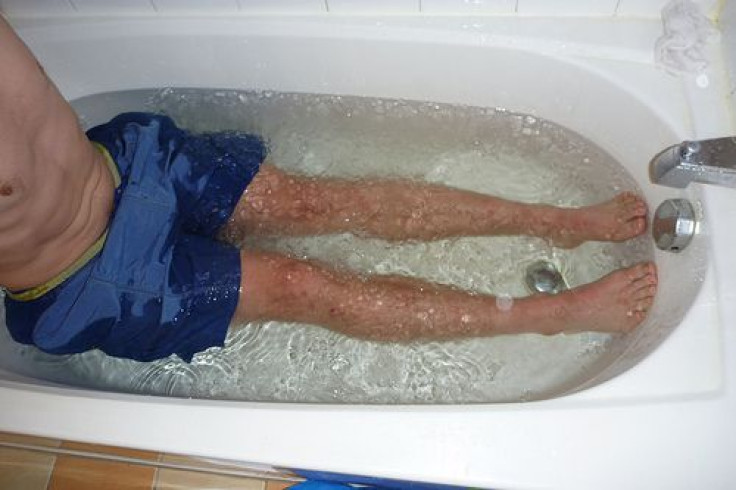Ice Baths After Exercise Found To Have No Benefit For Reducing Muscle Soreness, Strength Loss

Visit just about any high school in the United States over the summer and, with enough snooping, you’ll find each member of the school’s football team positioned squarely in his own ice water-filled trash can. To the foreign observer, it’s quite the site to behold; in the competitive sport world, ice baths are the go-to remedy after strenuous workouts. However, recent research suggests the practice’s benefits are overstated, and that exposing the body’s muscles to near-freezing temperatures may just be a waste of time.
A Questionable Practice
Coaches have championed ice baths after two-a-days or long runs for decades as a way to instantly cool off athletes’ warm muscles, thereby reducing inflammation and preserving strength after intense calorie-burning workouts. Researchers at the University of New Hampshire, however, argue that ice baths offer no measurable decrease in delayed onset muscles soreness (DOMS) and do not reduce inflammation or improve strength.
Formally called “cryotherapy” by study author Naomi Crystal, who conducted the tests as her Master’s thesis, the process of submerging one’s body in a pool of ice water was a questionable practice that seemed driven almost entirely by anecdote. Crystal relied on measures from several fields — including biochemical, physical, and subjective evaluations — in order to test the theory, which was recently published online in the European Journal of Applied Physiology.
"Ice baths are very popular as a treatment, but the research is really mixed as to whether they're beneficial,” she noted in a press release. “They're miserable. If it doesn't work, you don't want to waste your time.”
However, Dr. Eric Carson of the University of Virginia School of Medicine, said his experience with patients using ice baths has been overwhelmingly positive, even if the science hasn’t concretized the behavior’s salience.
“There’s a lot of stuff in sports medicine we do that we don’t necessarily know the true effectiveness in. It’s a debatable topic,” he said. “There’s gotta be some effect to it, because athletes will typically tell you it works, that it lowers the metabolic level and helps recovery.”
The Study And Its Findings
Crystal recruited 20 college-aged men to run downhill for 40 minutes. Post-run, half the participants jumped in a recycling bin filled thigh-high with ice water. The shock of 40 °F water nearly brought some of the subjects to tears, Crystal said, underscoring the immense pain involved.
When hot muscles essentially flash-freeze in extremely cold water, the difference in temperature signals to the nerves an even greater cold than if the body started out cooler. The same sensation can be observed when a person’s hands are cold in the wintertime. Running them under cool water produces a feeling of warmth; under warm water, they feel scalding hot.
Evaluations of the ice bath’s efficacy came within one hour to three days after the workout. Crystal and her team performed measures of quadriceps strength on a resistance machine, soreness walking down stairs, and thigh circumference, and analyzed concentrations of plasma chemokine ligand 2 (CCL2), a marker for inflammation, in blood samples.
No differences were found in measures of quadriceps strength, thigh circumference, or perceived soreness levels. CCL2 concentrations showed decreases in the cryotherapy group; however, the team found them statistically insignificant and greatly varied among subjects.
Crystal conceded her personal view differs slightly from the study’s formal conclusions. Level of rigor and athlete work output may necessitate remedies such as ice baths, although she points out they should still be observed briefly and infrequently.
“I’m not convinced that it doesn’t help at all,” she says. “Use them sparingly. Use them in tournament situations, use them with an athlete who has done something extraordinary. But for day-to-day athletes, I wouldn’t recommend them. They’re painful, and they’re time consuming.”



























